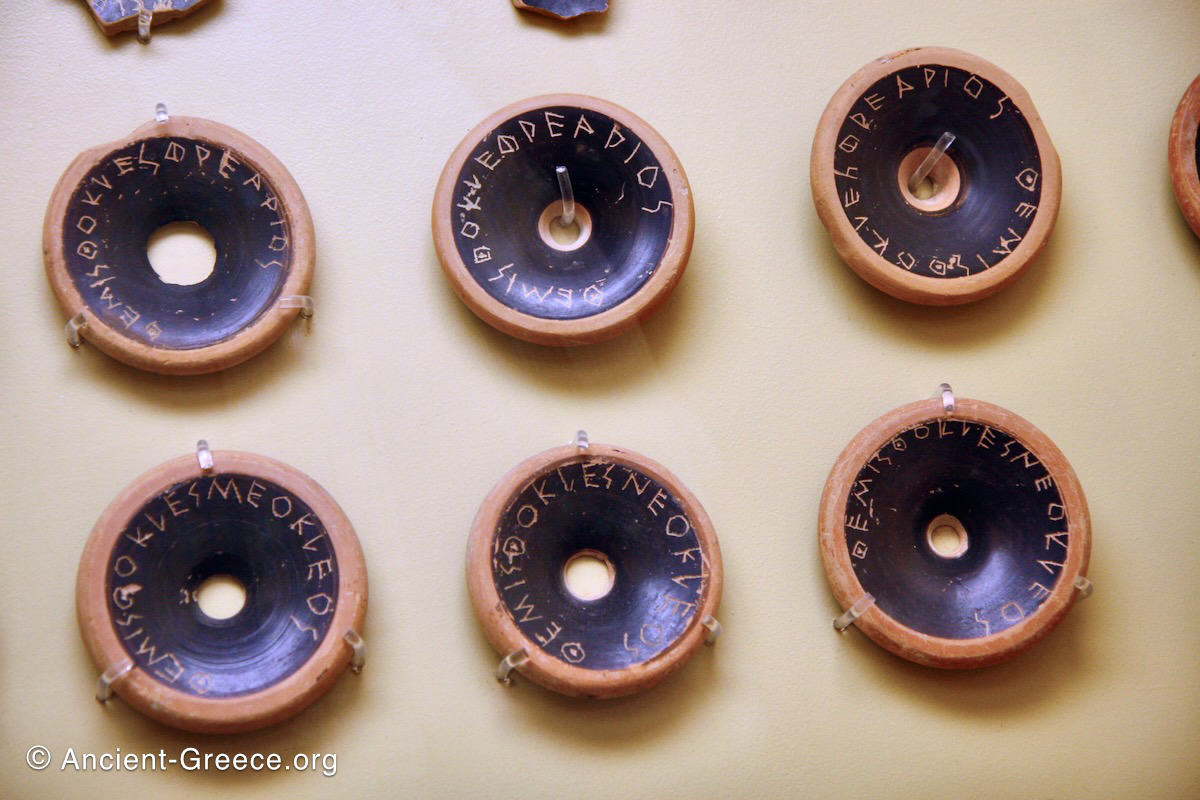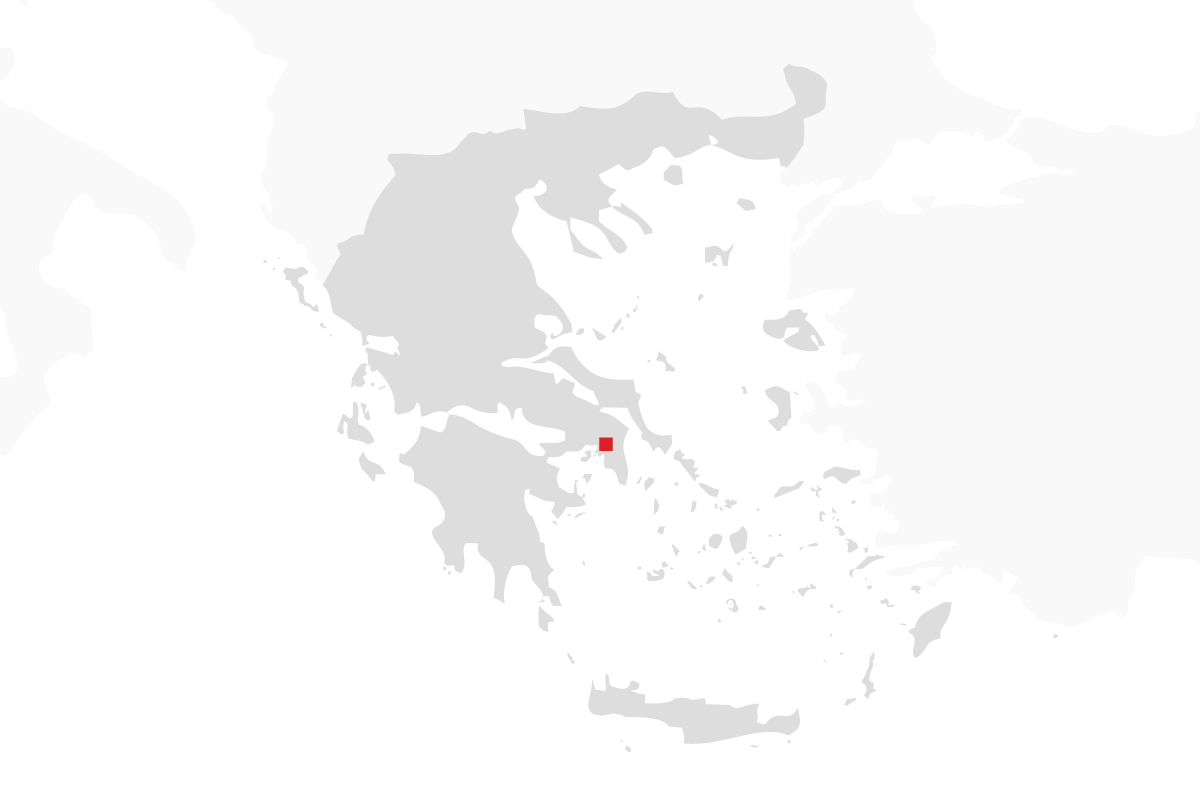
On this page:
The Agora (Αγορά) of Athens today is an archaeological site located beneath the northwest slope of the Acropolis. The word “agora” applies to an assembly of people and by extend marks the gathering place. In modern Greek the term means “marketplace”.
Every ancient and modern city includes a place for an agora, and the Agora of Athens, being located at the heart of the city, remained in use either as an assembly, or as a residential area for about 5000 years. Consequently the area has undergone countless building, destruction, and rebuilding cycles.
Today this strata of history has been distilled through excavations to expose the Agora’s important functions from mainly Archaic to Greco-Roman and Byzantine times. The site museum also displays evidence of habitation from Stone Age and Mycenaean periods.
Agora Monuments
The Agora’s importance does not rely on the splendor of its buildings, but on the significance of its history.
With minimal restoration for the most part, a visitor would have an impossible task to comprehend the place in its glory days without some historical background of the Agora.
Contrasting with the austere ruins in the middle of the archaeological site however, two splendid buildings stand as testaments to its past glory: the humble Temple of Hephaestus, which is the best preserved ancient Greek temples from the Classical era, and the impressive Stoa of Attalos–a building of the Hellenistic period that was reconstructed in the 20th century.
Here is a list of some notable monuments in the Agora of Athens:
Temple of Hephaestus
Ἡφαιστεῖον. Also transliterated as: Hephaisteion, Hephaesteion

The temple of Hephestus (or Thesion) crowns a low hill in the Northwest end of the Agora. It is one of the best preserved Doric temples of the classical period.
It was built at the same time as the Parthenon (a temple it closely resembles in smaller scale) around 450 BC, and was completed probably some time around 415 BC. Read more about the Hephaisteion…
Stoa of Atallos

The Stoa of Atallos is the most striking building in the Agora. It houses the Agora Museum.
The original Stoa was funded in 159-138 BCE by the King of Pergamon, Attalos II.
It was completely destroyed by the Heruli in 267 CE, but it was rebuilt in the 20th century (1953-6) and houses the Agora Museum.
Tholos

In Classical Greece the Tholos (Θόλος) functioned as the headquarters of the 50 Prytaneis (Executives) of the Boule (the Council of the Citizens). One Prytanes was chosen by sortition from the ten tribes of Athens, and served for one tenth of the year.
Prytaneis conducted the daily business of the state, and they formally called the meetings of the Boule and the Ecclesia of Athens, as well as supplementary meetings when necessary. They also received foreign ambassadors. Each day, one member of the Prytaneis was selected by lot to serve as Epistates (foreman or Chief Executive of the state) and to chair the meetings of the Boule and Ecclesia. Athenians could only serve as Epistates only once in their lifetime.
The Tholos served as dining place where the Prytaneis were fed at public expense. A group of no less than seventeen Prytaneis would reside in the Tholos overnight to deal with any potential emergencies. As such, the Tholos represents the pivot point around which Athenian Democracy revolved.
Bouleuterion

In Classical Athens the Bouleuterion (Βουλευτήριον) was the actual meeting place of the boule (the Senate) of Athens. The scant remains of this building are from the late 5th century BCE. An older Bouleuterion was found under the Metroon.
The boule consisted of 500 Athenians who were chosen by lot. They served for a year and met in the Bouleuterion to prepare the agenda and legislation for the ecclesia–the assembly of citizens responsible for legislation, military affairs, and for electing the strategoi (military Generals) and magistrates.
The boule supervised the state budget, and had wide responsibilities in all aspects of the state government. It also supervised public officials.
Metroon

The Metroon (Μητρῷον) was the state archive where official records were kept. It also functioned as a sanctuary of the Mother of the gods.
Monument of the Eponymous Heroes

In Classical times, the Monument to Eponymous heroes included ten bronze statues–one for each of the ten Athenian tribes.
The Monument of the Eponymous Heroes also served as a public announcement board of sorts. This is where state officials posted state sponsored events, i.e. draft legislation, military events and conscription, etc.
Altar of Zeus Agoraios, and the Triangular Shrine
Klepsydra, Aqueduct, and the Southeast Fountain House
Dekasterion and State Prison
The ruins of the state prison are outside the main Agora, southwest of the fountain house.
Many have been tempted to speculate that this is the death row where Socrates was held, but no evidence exists to identify this particular building with the end of the philosopher’s life.























